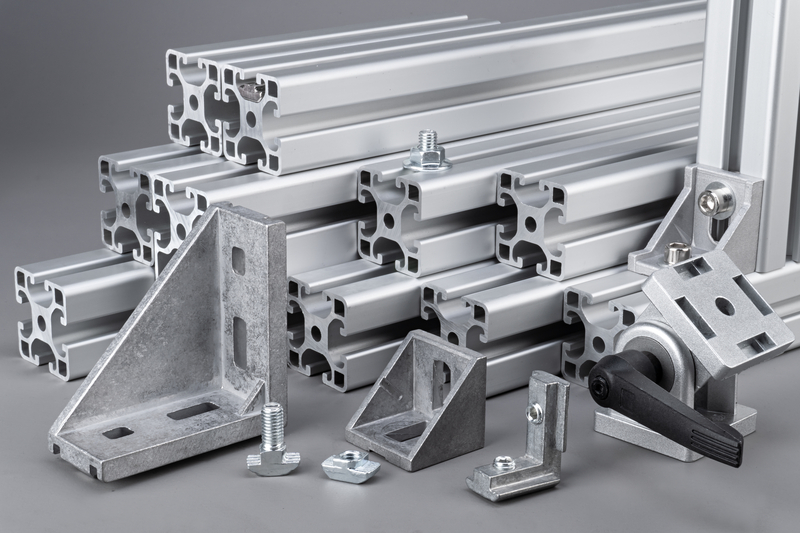
Due to their lightweight strength, exceptional corrosion resistance, and outstanding versatility, aluminum extrusion profiles have become a pillar of modern manufacturing. However, in order to enhance their design and functional properties further, manufacturers usually utilize different finishing techniques. See below:

One of the favorite means of finishing aluminum extrusions is anodizing. This process involves electrolysis formation of a thin layer of aluminum oxide on the surface resulting in enhanced durability and resistance to corrosion for the profile.
The protective layer not only protects aluminum from environmental elements but also offers a superior basis for the application of dyes enabling various colors to be chosen.
Anodizing offers finishes ranging from high gloss to low sheen matte finish. Furthermore, anodizing may be combined with other techniques such as powder coating to produce visually stunning effects that are truly one-of-a-kind. For durable yet colorful applications such as exacting architectural facade panels or consumer electronics; anodizing is quite appealing.
This method entails charging the surface of the profile with a dry powder using an electrostatic process. Finally, hardening it by heat turns it into a solid film. Powder coating provides excellent protection from wear and tear as well as chemicals and sun rays thereby making it appropriate for both indoor and outdoor applications such as motor vehicle parts, furniture, industrial equipment (e.g., automotive parts, furniture, industrial machinery components).
An advantage of having items powder coated is that there are many different colors available to select from as well as texture options and effects.
Consequently, this can be done with great customization in order to meet certain design needs like those of a modern appliance with a smooth black finish or maybe textured bronze style used on architectural elements.
In case you need waterproofing above all else then PVDF (Polyvinylidene Fluoride) coating will be your choice. Besides being very strong it also provides utmost resistance against chalking or fading due to harsh climatic conditions.
It is particularly suitable for use in architectural work where color retention over long periods is important (e.g., building facades, curtain walls). PVDF coatings can also be added to this list once speaking of aluminum extrusions in challenging environments (such as near the sea and industrial surroundings) because of their excellent chemical resistance attributes.
Painting with liquid paint is an electrostatic process that can improve the outlook of an aluminum extrusion by giving it a high-quality, glossy finish. This approach uses electrostatic charging to distribute the liquid paint across the surface of the extrusion so that it can form a consistent coat without any unevenness.
The next stage is to cure, meaning baking at very high temperatures, which results in a long-lasting and strong coating with good adhesion. Electrostatic liquid painting provides many different colors, for instance, those required for signage or consumer electronics.
Brushed finishes are special in terms of their visual aspect since they include mechanically brushing aluminum extrusions so as to obtain a distinct linear pattern on their surfaces. Such brushing not only adds beauty to profiles but also improves their level of scratch resistance.
By changing strokes’ direction and intensity, various effects may be achieved such as fine shine or roughness at large angles from 90 degrees along each straight element towards corner points resembling sandpaper patterns at small angles where coarse texture is quite more notable.
In aluminum extrusion profiles, wood grain finishes are capable of imitating natural wood look. This new invention combines aluminum’s benefits such as light weight, durability and low maintenance costs with the aesthetic appeal and warmth of wood.
It is a matter of time for a coating process that is so elaborate in copying the various patterns and textures of different species of timber that it results in providing artificial woods for us to use. Wood grain finishes are a long-lasting solution which are resistant to fading and requires minimal maintenance.
The finish is not much of a deal if you have the ability to tell your manufacturer the kind of finish you want. Here is where you may need JMA Aluminium to step in. They will provide you with the right profile along with the finish you need. But that's not the point, perhaps any manufacturer can do that.
The difference comes in quality and professionalism. JMA Aluminium boasts at least 3 decades experience, an impressive portfolio of successful projects, and consistently high customer ratings, you can check them out. Plus, their team is there to guide when it comes to picking the right profile.
Shishan Production Base
Nonferrous Metal Industrial Park, Xiaotang, Shishan Town, Nanhai District, Foshan City, Guangdong Province
Gaobian production base
Gaobian Zhangbian Industrial Zone, Dali Guangyun Road, Nanhai District, Foshan City, Guangdong Province
Company summary: + 86-757-85558828
Fax: + 86-757-85550238